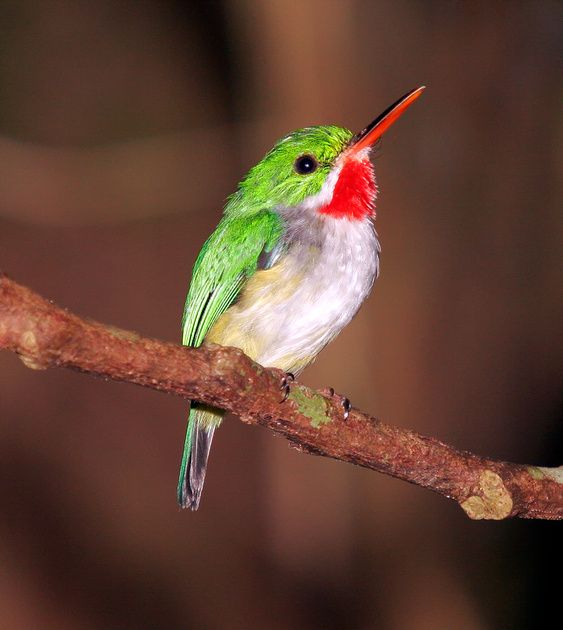The Galápagos penguin is a penguin endemic to the Galápagos Islands and Ecuador. It is the only penguin found north of the equator. Most inhabit Fernandina Island and the west coast of Isabela Island. The cool waters of the Humboldt and Cromwell Currents allow it to survive despite the tropical latitude. Galapagos penguins have a thin white band that runs under their chin and a black upside down horseshoe shape around their belly. The Galapagos penguin may look like the magellanic penguin but they are smaller and their black markings on their belly are thinner. They are found mainly on Isabela and Fernandina islands but they can also be seen on Floreana, Santiago and Bartolome. People often swim with them around Pinnacle Rock on Bartolome. Their diet consists primarily of cold water-schooling fish, such as anchovies, sardines and mullet, which are able to live in the Galapagos Marine Reserve thanks to the cold waters of the Humboldt Current. On land, snakes, owls and hawks are potential predators, but predation by them is generally minimal. Introduced cats and rats frequently attack both adults and eggs. In the sea, penguins may be hunted by sharks, fur seals or sea lions, and they are sometimes caught as bycatch in fishing nets. The Galapagos Penguin’s call is a distinctive honking bray, given mainly on the breeding grounds. This vocalization helps individuals to identify both their mates and their chicks. Here is a link so you can listen to this bird too.
🐧
if sharks eat penguins how many penguins have you eaten?
😅😅😅



